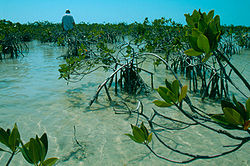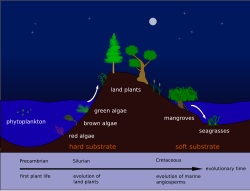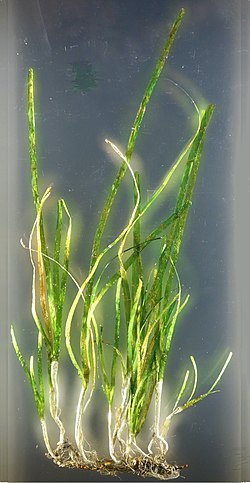
Back نجيل بحري Arabic Dəniz otları Azerbaijani Марскія травы Byelorussian Herba marina Catalan Ægte havgræs Danish Seegras German Θαλάσσια φανερόγαμα Greek Seagrass English Pradera marina Spanish علف دریایی Persian




Sea grasses (or seagrass) are flowering plants which live in the sea. They come from four plant families in the order Alismatales. They are monocotyledons which grow in marine, fully saline environments.
Sea grasses evolved from plants which went back to the ocean 70 to 100 million years ago, in the long, warm, Cretaceous period.
Sea grass is a key part of continental shelf ecosystems where phytoplankton produce carbonate sediment. This kind of ecosystem occurs in subtropical places like Florida Bay, and around Bermuda. Sea grass beds often contain many species from various phyla. Apparently, seagrass herbivory is a highly important link in the food chain. Many species feed on sea grasses, such as green turtles, dugongs, manatees, fish, geese, swans, sea urchins and crabs.
The surface of the seagrass is the place where Melobesia, a small alga, makes chalk as a by-product of its metabolism. That is not the only chalk-producing organism in the seagrass beds.[1]
- ↑ Westbroek, Peter 1991. Life as a geological force, p158–165. W.W. Norton, New York. ISBN 0-393-30817-0